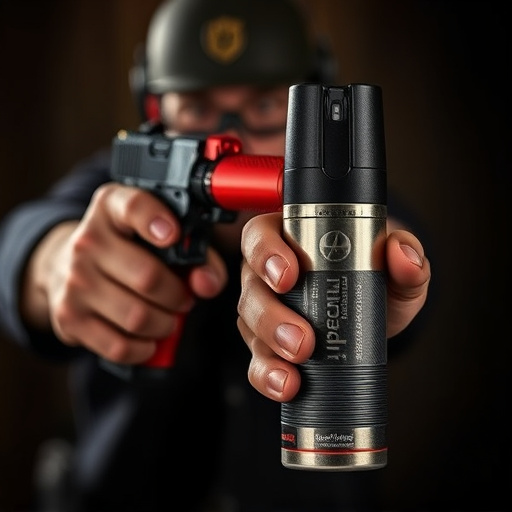Bear spray, using capsaicin to deter bears, is a vital self-defense tool for wildlife encounters, yet no single method guarantees 100% protection. After a bear attack, immediate and thorough removal of pepper spray from clothing with cold water and mild soap is crucial. Alternative strategies, like noise-making, distance maintenance, and carrying other deterrents, can minimize reliance on pepper spray. Understanding animal behavior and proper decontamination techniques are key to safe wildlife interactions.
“Staying safe during encounters with wild animals, especially bears, is paramount. This guide explores bear spray as a defense mechanism, delving into its efficacy and proper usage. We’ll navigate through the science behind pepper spray, offering practical tips on its application to maximize effectiveness. Additionally, we’ll uncover alternative self-defense strategies for wildlife encounters, including methods to swiftly and safely remove pepper spray residue from clothing—a crucial step for survival.”
- Understanding Bear Spray and Its Efficacy Against Animal Attacks
- Proper Application Techniques to Remove Pepper Spray From Clothing
- Alternative Strategies for Self-Defense Against Wildlife Encounters
Understanding Bear Spray and Its Efficacy Against Animal Attacks
Bear spray, also known as pepper spray designed for wildlife encounters, is a specialized self-defense tool used to deter and repel aggressive bears during outdoor activities in their habitats. Unlike traditional pepper spray, bear spray is formulated to be more potent and longer-lasting, with a range of up to 20 feet. It contains capsaicin, the same ingredient found in chili peppers, which irritates the eyes, nose, and respiratory system of bears, causing them to retreat.
Understanding how bear spray works and its efficacy is crucial when navigating bear country. After a bear attack, removing pepper spray from clothing is essential for safety and comfort. It’s recommended to thoroughly wash affected areas with soap and water immediately after exposure. Bear spray is highly effective when used correctly, providing a critical layer of protection during encounters with these powerful animals. However, it’s important to remember that no spray can guarantee 100% bear deterrence, especially in close-quarters confrontations.
Proper Application Techniques to Remove Pepper Spray From Clothing
When it comes to removing pepper spray from clothing, understanding the proper application techniques is crucial for effective decontamination. The first step involves quickly removing any contaminated garments, taking care not to spread the spray further. Soak the affected area with cold water for at least 15 minutes to dilute and rinse away the pepper spray particles.
For tough stains or persistent odors, a mild soap solution can be used. Gently rub the soapy water onto the fabric, focusing on the sprayed areas. Ensure thorough cleaning by rinsing multiple times with cold water. Avoid using hot water as it may set the pepper spray into the fibers. Always check the care label of the clothing first to ensure safe cleaning methods are used.
Alternative Strategies for Self-Defense Against Wildlife Encounters
When facing wildlife encounters, pepper spray is a popular and effective defense tool. However, there are alternative strategies to consider for those who want to minimize their reliance on bear spray or those who find it inconvenient during certain activities like hiking or hunting. One key tactic is to learn and practice bear-safe behaviors, such as making noise to avoid surprising animals and maintaining a safe distance. Carrying other types of self-defense tools, like flashlights or air horns, can also deter potential attackers.
Additionally, understanding animal behavior and habitat preferences can help prevent dangerous encounters. Knowing the areas where wildlife is most active and taking precautions, such as storing food securely, can reduce the risk of unexpected interactions. If a confrontation becomes inevitable, fighting back with items like sticks, stones, or even bare hands might be a last resort. Remember, the goal is to make yourself appear larger, make noise, and create distance, rather than relying solely on pepper spray for protection. Always consider removing pepper spray from your clothing after use to prevent accidental irritation or discomfort during subsequent encounters.
Bear spray can be an effective defense against animal attacks, but it’s crucial to understand its limitations and proper application. While it can deter bears and other wildlife, prompt action is key to success. Knowing how to remove pepper spray from clothing after a encounter is vital for safety and comfort. In addition to bear spray, alternative strategies like noise makers and physical barriers offer further protection. By combining these methods, individuals can enhance their self-defense against wildlife encounters in diverse environments. Remember, preparation and knowledge are key to navigating these potentially dangerous situations with confidence.
